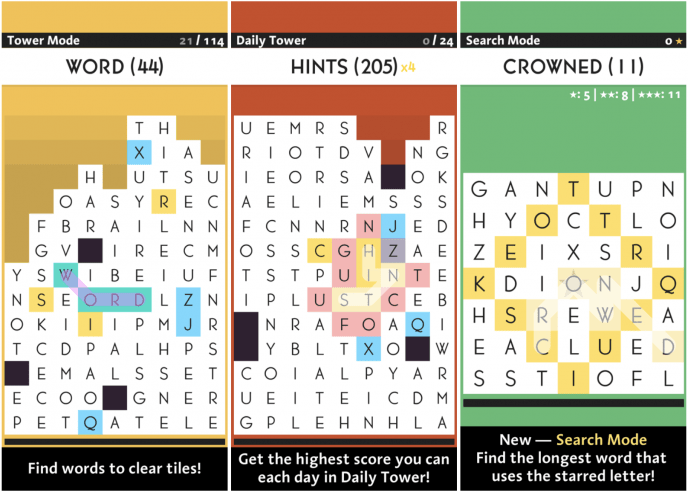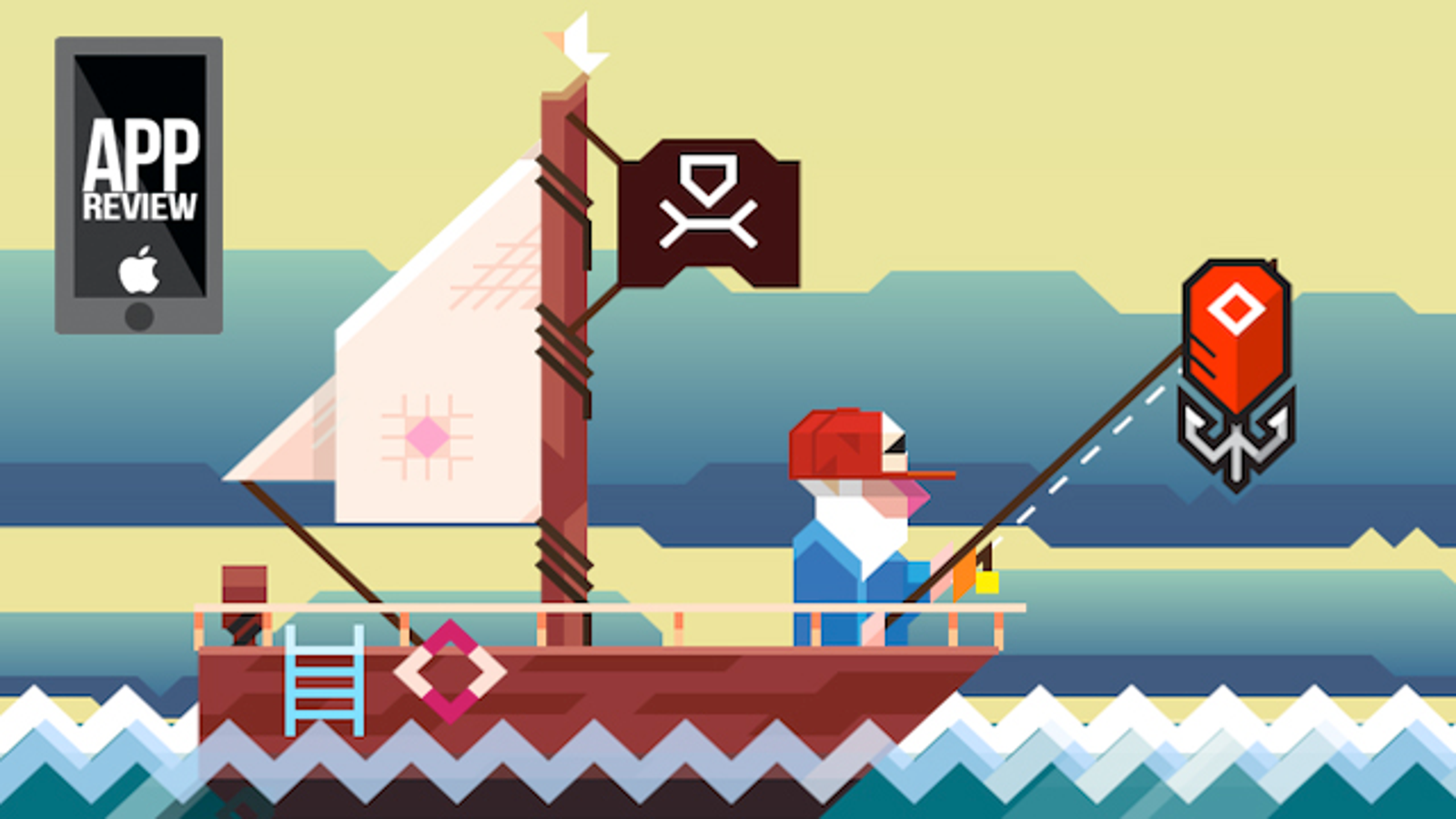

There’s nothing exceptional that wows you when using it.


SpellTower isn’t primarily an example of innovative, unique UI design. So, how exactly is this addiction accomplished? I think it’s a combination of three factors that Zach managed to mix perfectly: UI design, highscore competition, and a vocabulary learning process. While I’m not the best at puzzle and rush mode - I do not even reach the 1000 points mark, and to unlock the fifth mode you need more than 2000 points - playing the tower mode always is a lot of unconstrained fun and makes me coming back again and again. You can also play rush mode, which is the closest match to the idea of Tetris: rows add over time (whether you spell words or not), and you need to quickly eliminate them to prevent a letter from reaching the top. This principle is translated into five different game modes, two of which you can unlock by reaching extraordinary results in the two basic ones: tower mode, where the screen is completely filled up with letters and the goal is to make as many points with them as possible and the more tactical puzzle mode, which starts off with five rows, adding one row for each word you spell until the letters reach the top and the game ends. That’s all there is to say about the game’s concept: you can start playing SpellTower within seconds, a prior condition a game needs to get you addicted to it. Apart from those special features, the game follows one simple rule: the more letters a word has, and the more rare those letters are (a “Q” is obviously more valuable than an “E”), the more points you earn. Blue colored letters included in a word (these are letters which are hard to incorporate into words, like “Z” or “J”) delete a whole row and generate a lot of points. Some letters need to be included into certain minimum lengths, indicated by a small number in the top right of their square block, and words touching black boxes without letters will delete them. Random blocks with letters arranged in twelve rows cover the screen, and you have to connect letters located abreast of each other. To summarize it in one sentence: to me, SpellTower is like Tetris with words. Allow me now to shortly recap what playing SpellTower is all about (the app features a one-minute tutorial, which also interactively explains the game’s concept). It is a lovely website you should take a look at – whether you’re interested in games or not – just for the sake of admiring Zach’s work as a web designer.īut since I am interested in iOS games and I was curious to see if the game could live up to the site’s promise, I downloaded SpellTower for the ludicrously low price of $1.99 (actually, it’s currently on sale for $0.99, so please head over to the App Store to get it first, then continue reading afterwards). Zach Gage, the developer, promotes SpellTower with a nice scrollable site, containing some lovely designed icons and symbols, large, mono-colored backgrounds, and some moving CSS3 flavour. Although I concluded that it would not fit the series, the website nevertheless looked like the game could be worth my time. When I looked at the game’s website for the first time, I asked myself whether it could be a new subject for my Inspiring UI series.

I still remember the day when Chris recommended this game to me – SpellTower.


 0 kommentar(er)
0 kommentar(er)
